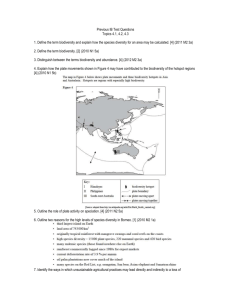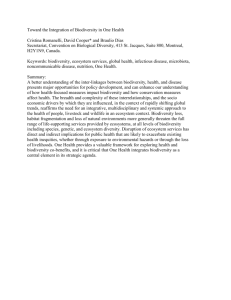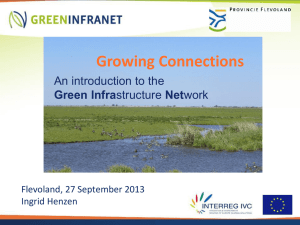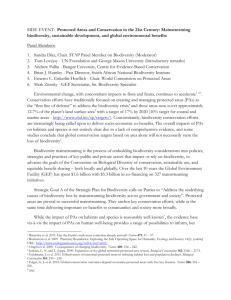Guidance for a rapid biodiversity and development linkages
advertisement
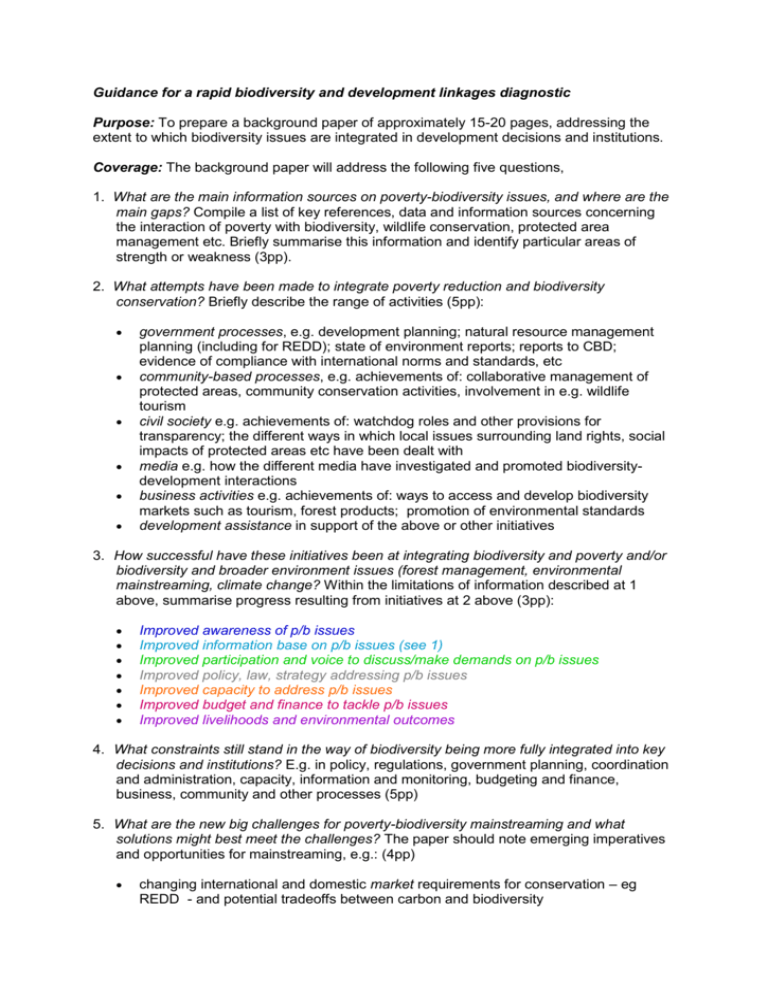
Guidance for a rapid biodiversity and development linkages diagnostic Purpose: To prepare a background paper of approximately 15-20 pages, addressing the extent to which biodiversity issues are integrated in development decisions and institutions. Coverage: The background paper will address the following five questions, 1. What are the main information sources on poverty-biodiversity issues, and where are the main gaps? Compile a list of key references, data and information sources concerning the interaction of poverty with biodiversity, wildlife conservation, protected area management etc. Briefly summarise this information and identify particular areas of strength or weakness (3pp). 2. What attempts have been made to integrate poverty reduction and biodiversity conservation? Briefly describe the range of activities (5pp): government processes, e.g. development planning; natural resource management planning (including for REDD); state of environment reports; reports to CBD; evidence of compliance with international norms and standards, etc community-based processes, e.g. achievements of: collaborative management of protected areas, community conservation activities, involvement in e.g. wildlife tourism civil society e.g. achievements of: watchdog roles and other provisions for transparency; the different ways in which local issues surrounding land rights, social impacts of protected areas etc have been dealt with media e.g. how the different media have investigated and promoted biodiversitydevelopment interactions business activities e.g. achievements of: ways to access and develop biodiversity markets such as tourism, forest products; promotion of environmental standards development assistance in support of the above or other initiatives 3. How successful have these initiatives been at integrating biodiversity and poverty and/or biodiversity and broader environment issues (forest management, environmental mainstreaming, climate change? Within the limitations of information described at 1 above, summarise progress resulting from initiatives at 2 above (3pp): Improved awareness of p/b issues Improved information base on p/b issues (see 1) Improved participation and voice to discuss/make demands on p/b issues Improved policy, law, strategy addressing p/b issues Improved capacity to address p/b issues Improved budget and finance to tackle p/b issues Improved livelihoods and environmental outcomes 4. What constraints still stand in the way of biodiversity being more fully integrated into key decisions and institutions? E.g. in policy, regulations, government planning, coordination and administration, capacity, information and monitoring, budgeting and finance, business, community and other processes (5pp) 5. What are the new big challenges for poverty-biodiversity mainstreaming and what solutions might best meet the challenges? The paper should note emerging imperatives and opportunities for mainstreaming, e.g.: (4pp) changing international and domestic market requirements for conservation – eg REDD - and potential tradeoffs between carbon and biodiversity ‘green economy’, ‘green investment’ and ‘green jobs’ opportunities in agriculture, forestry, fisheries, energy, tourism, etc technological improvements supporting pro-poor sustainable NR use particular trade-offs e.g. between biodiversity and mining Source: IIED and the Poverty and Conservation Learning Group





